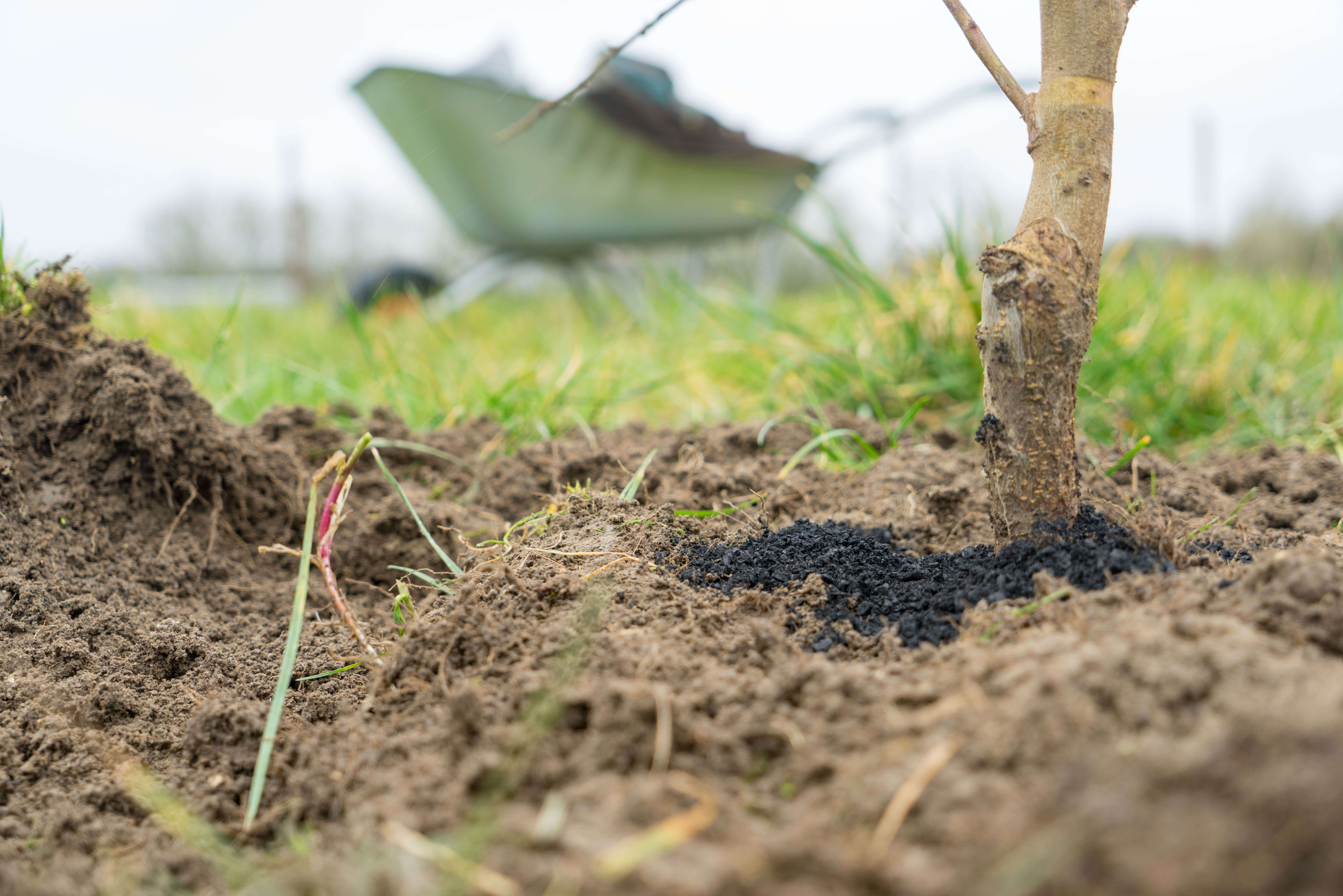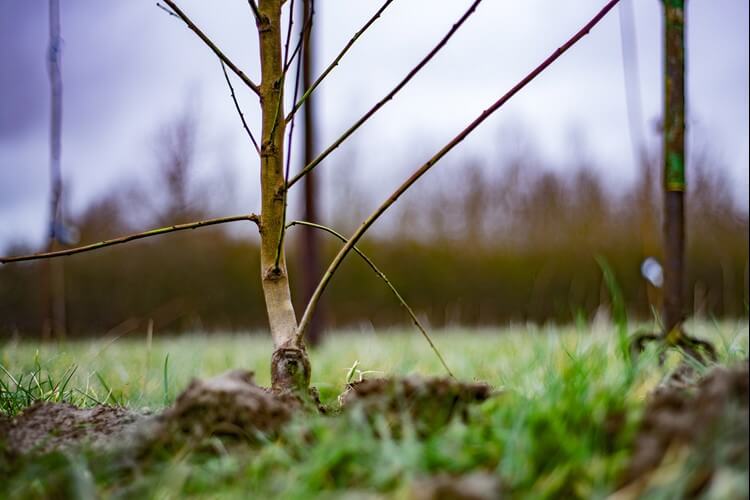- Soil Association
- Take action
- Grow at home
- Allotments and home-growing
- how to plant a tree

How to plant a tree
How to plant a tree in your garden or allotment
At a time when trees could be helping to save the planet, planting a tree can become an emotional and even a political act. Trees can be a brilliant source of produce, as well as storing carbon and looking after the soil. As an important habitat for wildlife, it’s vital that the tree not only survives but grows well and quickly. Here Ben Raskin, our Head of Horticulture, explains how to give your tree the best start in life so that it is still standing for years to come.
1. Dig a hole
As a rule dig a hole just a bit bigger, but no deeper than the roots of the tree you are planting.

2. Prepare the roots
Bare root trees will have little or no soil on the roots. For many species you can prune the roots back before planting. Though this seems drastic, most of the small roots will have been damaged when the tree was lifted, so cutting back will encourage new growth once the tree is in the ground. This also makes planting much quicker and easier and has no ill effect on growth.
Pot grown trees need to be treated differently. Often the roots will have started to grow around the inside of the pot, this is called being “pot bound”. With no action pre-planting the tree roots are likely to continue to grow around in a circle in the hole after planting, meaning the tree will never thrive. In mild cases simply take a sharp knife and cut through the thin roots around the edge. This will encourage fresh new roots that should grow outwards. Where there are roots of pencil thickness or more growing around the edge, use secateurs to cut through the root and tease them out of the compost a bit.
3. Planting
With bare root trees, it's important to check the hole depth is right by laying a stick across the top of the hole and making sure the stick lines up with the right part of the tree. Holding the tree firmly with one hand, half fill the hole with soil, give the tree a gentle shake to allow the soil to get in between the roots. Firm softly with your feet, then fill the rest of the hole with soil, shake again and then tread more heavily to ensure the tree is properly in the ground. If you have small children, get them to jump up and down around the tree, otherwise use your heel to stamp the soil into place.
Pot grown trees are easier, just pop them in the hole, ensuring the top of the root ball lines up with the soil surface, then fill the soil around and firm in as above.

4. Compost in the hole or not?
Historically it was recommended to add compost into the planting hole. However, this creates a lovely rich planting hole that tree roots can be reluctant to leave. It is better to mulch on top of the tree.
5. Staking
For very tiny saplings, staking may not be necessary, the blowing wind stimulates them to grow strong roots to hold them in place. For any tree over 60cm (2 ft) tall, a stake is highly recommended, and for bigger trees a strong one is essential.
6. Watering
In a dry year, it is essential to water. It helps to settle the soil amongst the roots ensuring good root/soil contact. The crucial period is in the first spring as the new and still shallow roots grow and look for water. In dry soils this is particularly important. Water perhaps once a week with a really good soak.
7. Mulching
Competition from weeds will have a negative impact on how well and quickly your tree grows.
Using a good mulch will increase the water available in the soil by about 25% and can be the difference between the tree failing or thriving. A wood chip mulch of at least 10cm thick will give your tree the best possible start. Make sure that it does not touch the trunk of the tree as that can cause a damp area that encourages rotting and disease.
More of Ben's insight into trees can be found in his book 'Plant a Tree and Retree the World', available online and at all good booksellers.
